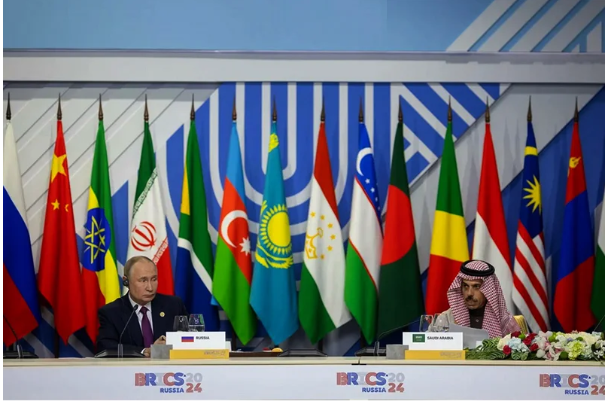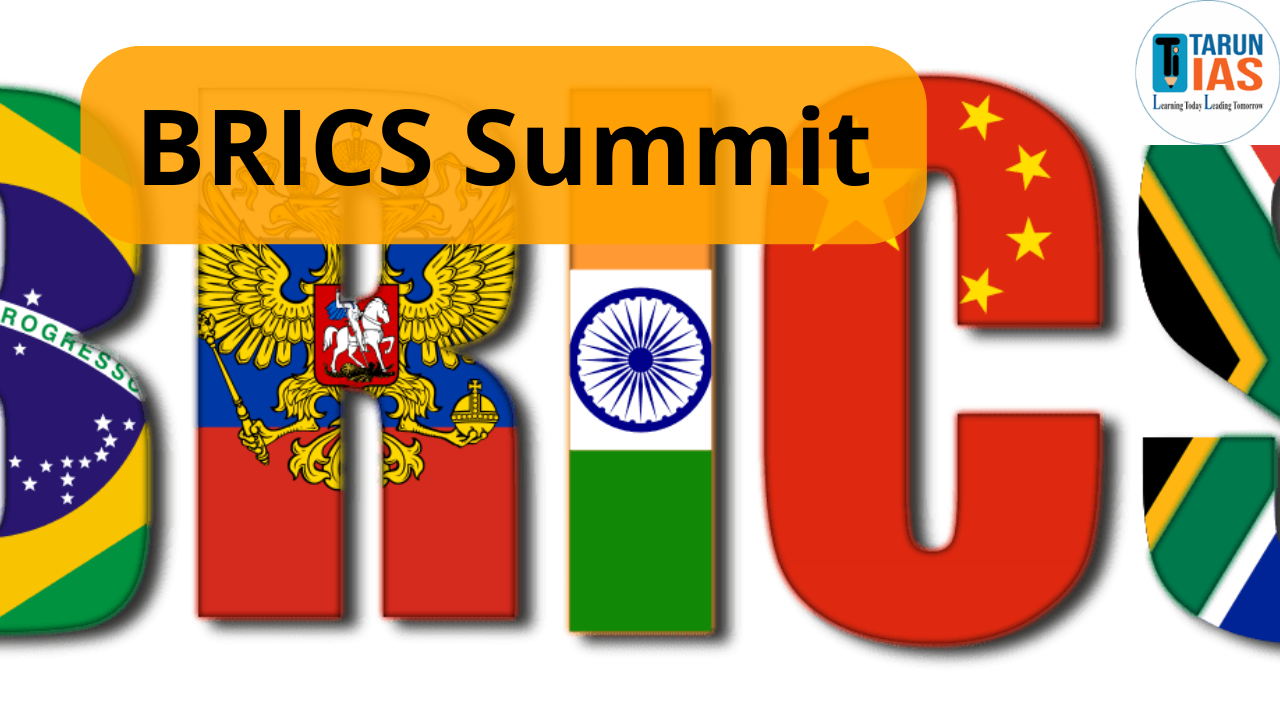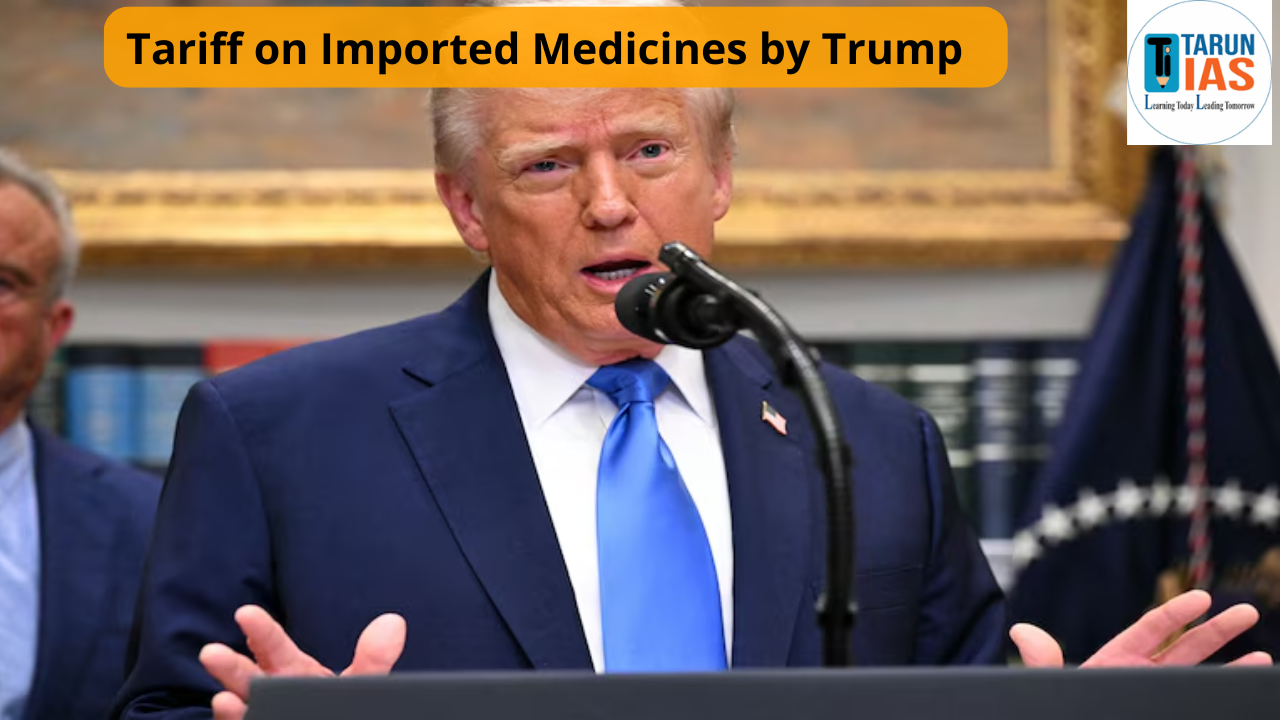BRICS Plus Insights from the 16th Summit
-
- The 16th BRICS Summit, held in Kazan, Russia, marked a historic moment as it welcomed the expanded BRICS+ group, including new members such as Egypt, Ethiopia, the UAE, Iran, and Saudi Arabia.
- This summit also featured a special outreach conference that brought together around 30 leaders from the Global South.

Key Outcomes of the 16th BRICS Summit
- Kazan Declaration: The summit adopted the Kazan Declaration, which highlighted the need for a fairer global governance structure and emphasized the importance of resolving international conflicts through dialogue and peaceful means.
- Introduction of BRICS Pay: An alternative payment system to SWIFT was launched, aiming to facilitate trade among member nations while decreasing reliance on Western financial systems.
- Establishment of the BRICS Grain Exchange: This initiative is designed to boost food security and promote agricultural cooperation among BRICS countries, addressing pressing global food challenges.
- Cross-Border Payment System Feasibility: Discussions were held on the feasibility of a BRICS Cross-Border Payment System to enhance integration among member economies and streamline transactions.
- Political and Security Cooperation: The summit called for reforms in global institutions like the UN and IMF to ensure that developing countries have equitable representation and a voice in global decision-making.
Historical Evolution of BRICS
- 2001: Jim O’Neill, a Goldman Sachs economist, coined the term “BRIC” to identify the emerging economies of Brazil, Russia, India, and China. He forecasted that these nations would significantly influence the global economy by 2050.
- 2006: The BRIC nations held their first informal meeting at the G8 Outreach Summit in St. Petersburg, Russia, signaling the start of diplomatic engagement among these countries.
- 2009: The inaugural BRIC summit took place in Yekaterinburg, Russia, where leaders discussed global governance and economic collaboration.
- 2010: South Africa was invited to join the group, leading to its rebranding as BRICS.
- 2014: The New Development Bank (NDB) was officially launched with an initial capital of $100 billion to support development finance initiatives.
- 2023: The BRICS grouping expanded to BRICS+ with the admission of six new member states: Saudi Arabia, Iran, Egypt, Ethiopia, Argentina, and the UAE.
Significance of BRICS
- Advocating a Multipolar Global Order: BRICS promotes a multipolar world where political and economic equality is prioritized. The expanded BRICS now represents about 41% of the global population and around 28% of the world’s GDP.
- Countering Western Dominance: By providing an alternative to Western-dominated coalitions like the G-7, BRICS embodies a vision of a new world order that seeks independence from Western hegemony.
- For instance, the establishment of the New Development Bank (NDB) has allowed BRICS nations to fund infrastructure projects without relying on Western financial institutions.
- Projects like the funding of renewable energy initiatives in Brazil and green infrastructure development in India illustrate how BRICS can foster economic independence.
- Platform for the Global South: BRICS serves as a platform for Global South countries to voice their concerns on international issues, helping to shape global agendas. The recent inclusion of nations like Egypt and Ethiopia further expands this representation.
- Alternative to Bretton Woods Institutions: BRICS offers alternatives to the World Bank and IMF, which are often viewed as serving Western interests.
- A notable example is the NDB financing of a $1 billion project for renewable energy in South Africa, which aims to improve energy access and promote sustainable development.
- Additionally, BRICS Pay aims to streamline cross-border transactions among member states, reducing dependency on the US dollar and Western banking systems.
- Decoupling from the Dollar: Representing about 23% of global GDP and 18% of world trade, BRICS aims to de-dollarize international trade by encouraging the use of domestic currencies in transactions.
- For example, Russia and China have engaged in bilateral trade agreements using their respective currencies, reducing the need for dollar transactions. This shift not only mitigates the impact of US sanctions on Russia but also promotes greater economic sovereignty for member nations.
- Oil Trade Collaboration: BRICS+ includes six of the top ten oil-producing nations, representing approximately 45% of global oil production capacity. This provides opportunities for collaboration beyond the traditional OPEC+ framework.
- The recent discussions around establishing a BRICS Oil Exchange could facilitate more competitive pricing and trade among member countries, allowing nations like Saudi Arabia and Russia to coordinate oil supply strategies that benefit their economies without Western oversight.
- Commitment to Sustainable Development Goals (SDGs): BRICS is dedicated to addressing issues such as poverty and food security, aligning with the United Nations’ SDGs to create a more equitable world.
- A relevant example is the BRICS Grain Exchange initiative, aimed at enhancing food security by facilitating trade in agricultural products among member states. This initiative not only helps to address food shortages but also promotes agricultural cooperation, which is vital for countries like Ethiopia, where agriculture is a key component of the economy.
Challenges Facing BRICS
- Chinese Influence: There is concern over China’s push for favorable expansion, including nations like Belarus. India views this as a potential shift towards a China-centric BRICS.
- Identity and Focus: BRICS grapples with balancing its core focus on financial cooperation versus expanding into a broader geopolitical coalition by welcoming more countries.
- For instance, while Brazil and South Africa advocate for a financial-centric approach, countries like Iran may push for more geopolitical engagement. This tension was evident during the summit when differing priorities regarding trade agreements and military cooperation emerged among member nations.
- Political Divisions: The diverse political systems among member nations complicate consensus-building, particularly on issues like UNSC reforms.
- For example, India’s democratic governance often clashes with China’s authoritarian regime, creating friction during negotiations. The inability to agree on reforming the UNSC, where India seeks permanent membership while China hesitates, illustrates the challenges posed by differing political ideologies.
- Economic Disparities: Economic differences among member countries create challenges for collective action, as nations like China and India lead while Brazil and Russia face economic struggles.
- Dominance of China: With China accounting for 38% of BRICS exports, its economic clout can overshadow other member nations, potentially fostering resentment and nationalism.
- Limited Reform Impact: Despite its ambitions, BRICS has not yet succeeded in implementing substantial reforms within Bretton Woods institutions like the IMF and World Bank or achieving significant de-dollarization. The NDB was established to address some of these issues, but its impact has been limited.
- For example, while the NDB has financed several projects, it has yet to significantly challenge the dominance of the dollar in international trade or bring about reform in the IMF voting structure that would favor developing nations..
- Consensus on Global Issues: Differences in perspectives on key international issues, such as the Russia-Ukraine conflict, hinder unified decision-making. For instance, China tends to support Russia, while India adheres to its Non-Alignment Strategy.
Way Forward
- Rule-Based Framework: BRICS+ should prioritize a rule-based approach to minimize economic hegemony and discourage anti-West agendas, fostering a cooperative spirit among member states.
- Reducing Dominance of Key Players: To truly represent a diverse range of emerging markets, BRICS must lessen the dominance of the trio—Russia, India, and China—and embrace a more inclusive approach.
- Clear Membership Criteria: Establishing transparent criteria for new members is vital for maintaining cohesion and focus within the group as it expands.
- Balancing Chinese Influence: India should adopt strategies to counterbalance China’s influence within BRICS, ensuring an equitable distribution of power and resources.
- Permanent Secretariat: The establishment of a permanent secretariat could enhance coordination and facilitate the smooth functioning of BRICS, ensuring effective collaboration.
- Enhancing Economic Cooperation: Initiatives such as the BRICS Grain Exchange and Cross-Border Payment System should be prioritized to deepen economic ties and reduce dependence on Western financial institutions.
- Strengthening Political Dialogue: Member nations should work towards resolving political differences through dialogue, striving for consensus on contentious issues that impact collective decision-making.















